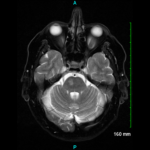Dr. Langford’s study concluded that in patients with GCA, the addition of abatacept to a treatment regimen with prednisone reduced the risk of relapse and was not associated with a higher rate of toxicity compared with prednisone alone.
Although glucocorticoids remain the foundation of care for GCA, Dr. Langford says that new drugs will change the way GCA is treated in the future. Supporting this viewpoint is that another medication, tocilizumab, was recently approved by the FDA for the treatment of GCA following positive results from Phase 2 and Phase 3 trials.
“These were very encouraging results with the use of abatacept in GCA,” Dr. Langford says. “I would urge rheumatologists to read the full study and to weigh the risks and benefits in deciding whether the use of a novel treatment option combined with prednisone would be appropriate to consider in the setting of their individual patient.”
Linda Childers is a health writer located in the San Francisco Bay Area.
References
- Langford CA, Cuthbertson D, Ytterberg SR, et al. A randomized, double-blind trial of abatacept (CTLA-4Ig) for the treatment of giant cell arteritis. Arthritis Rheumatol. 2017 Apr;69(4):837–845.
- Proven A, Gabriel SE, Orces C, et al. Glucocorticoid therapy in giant cell arteritis: Duration and adverse outcomes. Arthritis Rheumatol. 2003 Oct 15;49(5):703–708.
- Hellmann DB, Imboden JB. Vasculitis syndromes. In McPhee SJ, Ppadakis MA, Rabow MW, eds. Current Medical Diagnosis & Treatment. 50th ed. New York: McGraw-Hill Medical; 2011:818–820.
Note: This project received federal funding from NIAMS, under contract HHSN2682007000036C.

